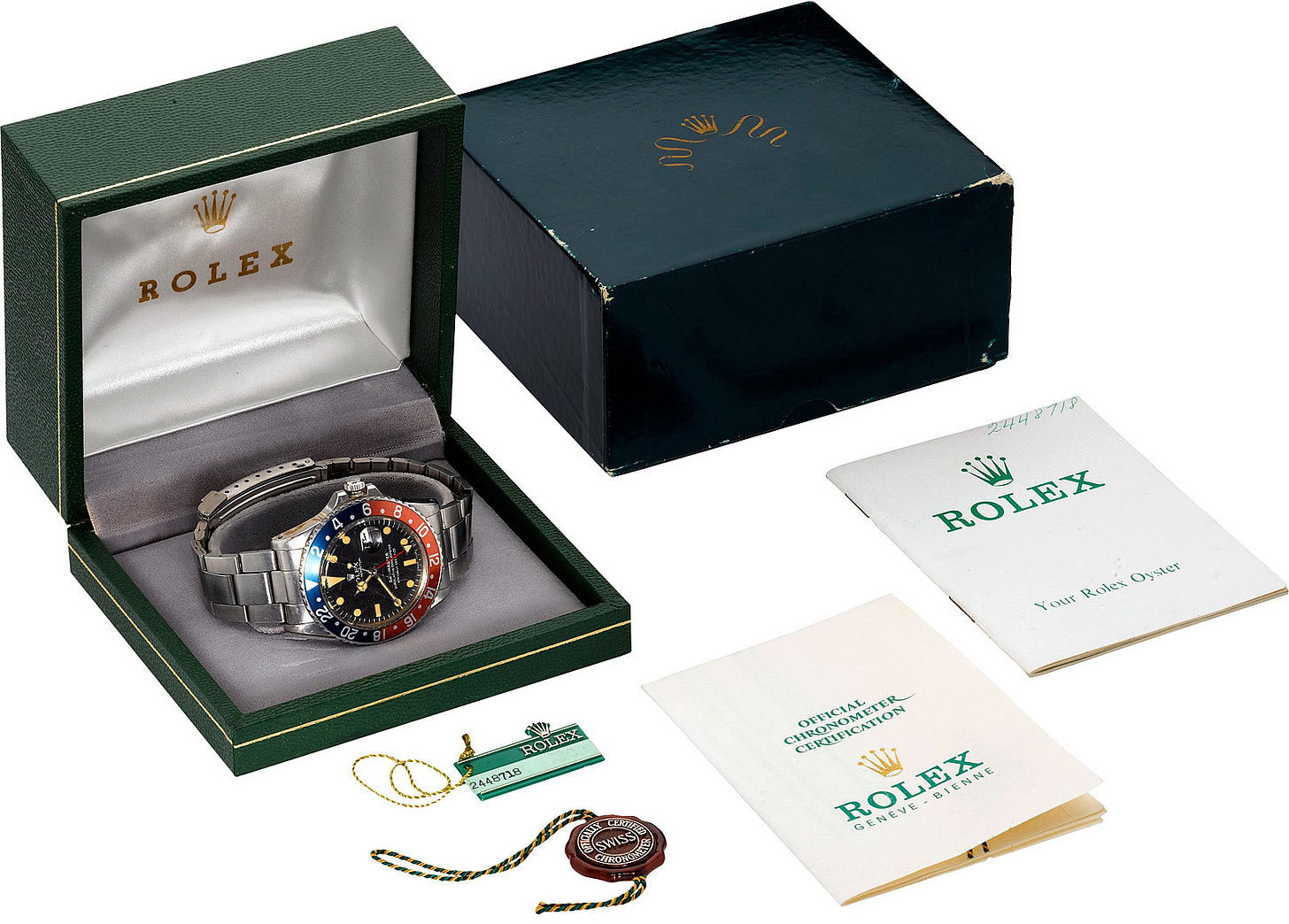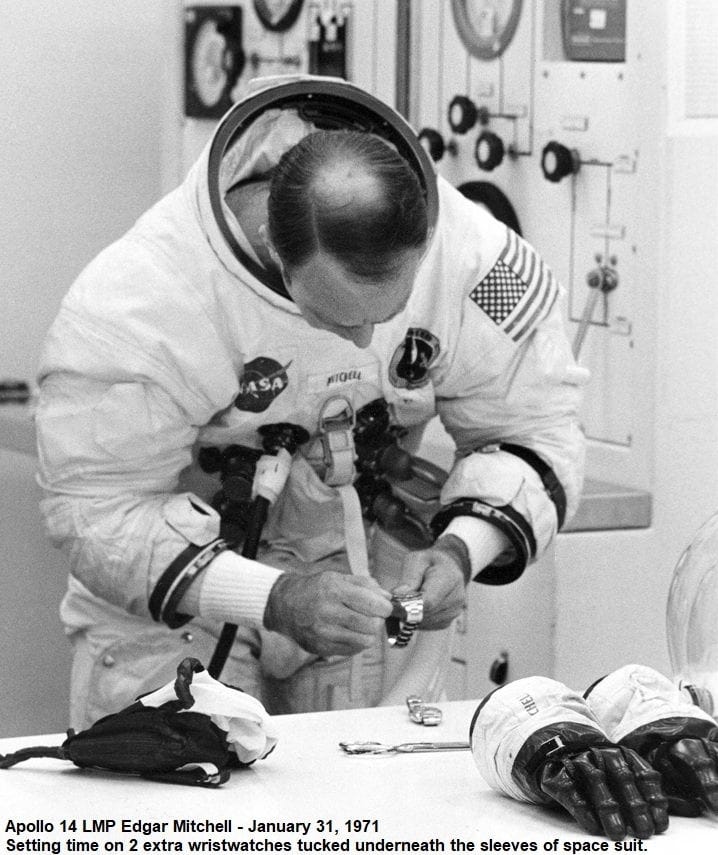SDC Weekly 68; More on Watch Collector Types; Tribalism Revisited; More on Journalling
Rolex Moonwatch, New Price Structure at Chrono24, Swatch Rollercoaster, Art Market Blues, Sotheby’s Problems, GPHG 2024 Jury, Trump's Tourbillon, LVMH Drama
🚨 Welcome to another edition of SDC Weekly. Estimated reading time: ~43 mins
Welcome to another edition of SDC Weekly. This week, we cover the story behind Edgar Mitchell’s Apollo 14 Rolex GMT-Master, examine Chrono24’s new pricing structure, and analyse Swatch Group’s recent stock volatility. We also explore the emotional dimensions of collecting, revisit the concept of tribalism in the watch world, and ponder the value of journalling for collectors.
If you’re new here, welcome! Feel free to catch up on the older editions of SDC Weekly here, and please subscribe if you haven’t done so already.
🎈 Small stuff
Rolex Moonwatch!
Hold onto your space helmets! A truly out-of-this-world piece recently landed on the auction scene. First spotted by @niccoloy, Edgar Mitchell’s Rolex GMT-Master ‘Pepsi’ worn during the Apollo 14 mission, is up for grabs at RR Auctions.
Adding a touch of family drama to the mix, the caseback is engraved “Worn by Cdr. E. Mitchell on Apollo 14, 1971, To Karlin—My Daughter.”
For those keeping score, this is only the second Apollo-flown Rolex to ever hit the public market. The first, belonging to Apollo 17’s Ron Evans, fetched $131,450 back in 2009. Rumour has it that Rolex themselves snatched up Evans’ watch, leading some to speculate the Crown might be eyeing Mitchell’s watch as well.
As I write this, the bidding sits at $17,717, but with an estimate of $400,000+, some expect the price to skyrocket faster than an Apollo mission.
New Price Structure at Chrono24
Chrono24 recently announced a significant overhaul of its pricing structure. Set to take effect from October 1, 2024, this new “dynamic” pricing model aims to streamline fees for its 43,000 professional dealers and private sellers. But is this a win-win for all involved, or are some dealers feeling the pinch?
According to Chrono24’s official announcement, the key changes include:
Introduction of a unified “Professional Package” replacing the old Light, Pro, and Premium tiers.
Monthly billing for all dealers.
Automatic package size adjustments based on listing volume.
A new dynamic transaction fee system.
Chrono24 states these changes will offer “maximum flexibility” and adapt to individual dealer needs. They’ve provided a detailed pricing table, with packages ranging from €199 for up to 25 watches to €2,199 for up to 1,000 watches.

The company’s spokesperson told WatchPro: “We are addressing past inconsistencies in package sizing by enforcing package limits more rigorously through automated adjustments. This also tackles instances where inventory exceeded package allowances.”
Chrono24 argues this new system will benefit sellers who actually move inventory, stating, “With the corresponding reduction in transaction fees, sellers that actually sell through the platform will benefit from this update.”
They’re positioning this as a way to encourage dealers to focus on fast-selling inventory rather than listing large numbers of watches that may not sell.
Not all dealers are convinced. Speaking anonymously to WatchPro, one dealer expressed frustration: “I used to pay €249 a month to list a maximum of 100 watches. That is now leaping to €629 with no additional benefits obvious such as a reduction in commission, which is now routinely over 10%.”
This sentiment highlights concerns that the new structure could eat into profits - which is especially challenging given the current weak demand and falling prices in the secondary market.
It is probably too early to predict the long-term effects, but this move by Chrono24 could significantly impact how dealers approach online sales. It may encourage more selective listing practices and potentially reshape inventory management strategies across the industry.
As the dust settles on this announcement, all eyes will be on how dealers adapt and whether this new model truly delivers on Chrono24’s promise of a more effective and flexible platform for watch sales.
Looking at the ‘consumer side’ this could actually improve the experience. I think this change will result in a huge reduction of listings overall, effectively removing all the ‘deadweight’ such as opportunistic listings of watches which dealers don’t have in stock. There are also a large number of dealers who list in more than one location - this might cause them to de-list from C24 and move elsewhere; likely only the smaller dealers. I have no doubt the biggest dealers will have no problem negotiating better rates and staying with C24. Given this is the largest online marketplace, it might benefit smaller dealers to form ‘alliances’ which pool their resources to share a dealer account which allows them to take advantage of economies of scale.
Swatch Rollercoaster
Last week, Swatch Group CEO Nick Hayek, doused the flames of speculation about taking the company private, even as its stock soared dramatically. In an interview with Bloomberg, Hayek stated, “I always said that taking the company private would be a nice thing to do and, at so ridiculous low share prices that we saw since quite some time, even more seducing…” This comes on the heels of a remarkable 16% intraday jump in Swatch shares - an event that saw the stock halted twice due to volatility.
What triggered this spike? Per Bloomberg, the timing aligns with Hayek’s comments to Bilanz, where he was saying the company is “thinking about what we can do,” in relation to going private. For the record, Hayek has consistently shied away from the debt he;d need to buy out existing shareholders.
The backdrop of this market activity isn’t just speculation; it’s part of a broader narrative around Swatch’s recent performance. After a rocky year, where shares have dropped about 24% due to a significant slump in sales from China - an essential market accounting for nearly a third of its revenue - the recent boost in stock price is probably welcomed but likely going to be short-lived. Contributing factors include optimism around Chinese economic stimulus and the possibility of short covering, as about 19% of Swatch’s free float was out on loan, highlighting its status as one of Europe’s most shorted stocks (per Bloomberg).
This resurgence follows the phenomenal success of the MoonSwatch collaboration, which has reinvigorated interest in Swatch. The hype surrounding MoonSwatch has showcased Hayek’s ability to innovate and capture consumer attention, even as luxury counterparts struggle with the post-pandemic recovery.
While Hayek’s musings about privatisation may tantalise investors, the focus must remain on strengthening its brand and reviving its sales in China. If Swatch can continue riding the wave of recent successes and maintain momentum in appealing to a younger demographic, we may just witness a revival that keeps the company’s stock steady rather than slipping back into the shadows. Another thing he should do before thinking about going private, is revamping the Breguet brand, and finding a way to boost its appeal. Breguet is criminally underappreciated, and a brand like that deserves better stewardship.
If Hayek was ever going to take it private, he ought to have done this before the MoonSwatch launch (March 2022). Right now, the wave is ending, and the price is back down - which tells me, if he does take it private now, he has another ace up his sleeve.
Sotheby’s Problems
Sotheby’s appears to be navigating treacherous waters - as reported by the WSJ. A perfect storm of financial pressures, market downturns, and questionable management decisions now threatens to upend its legacy.








